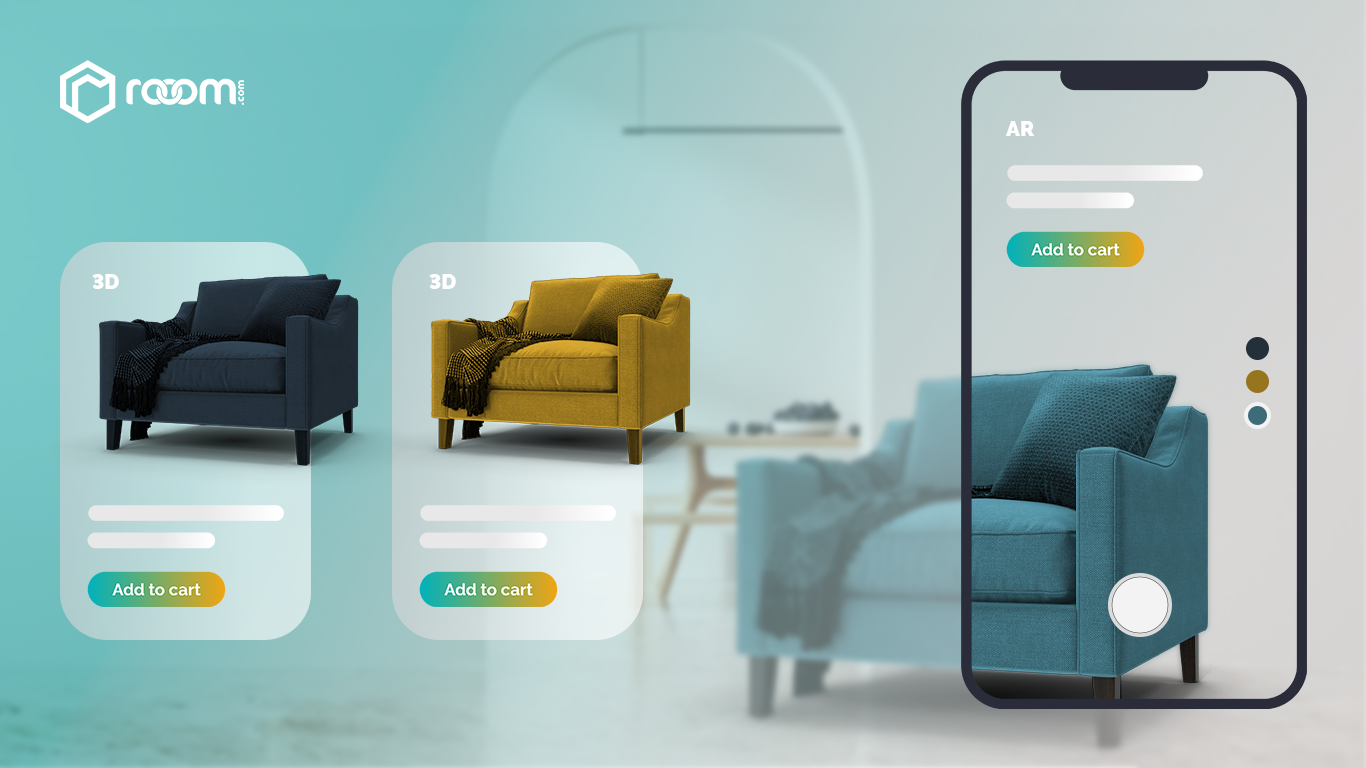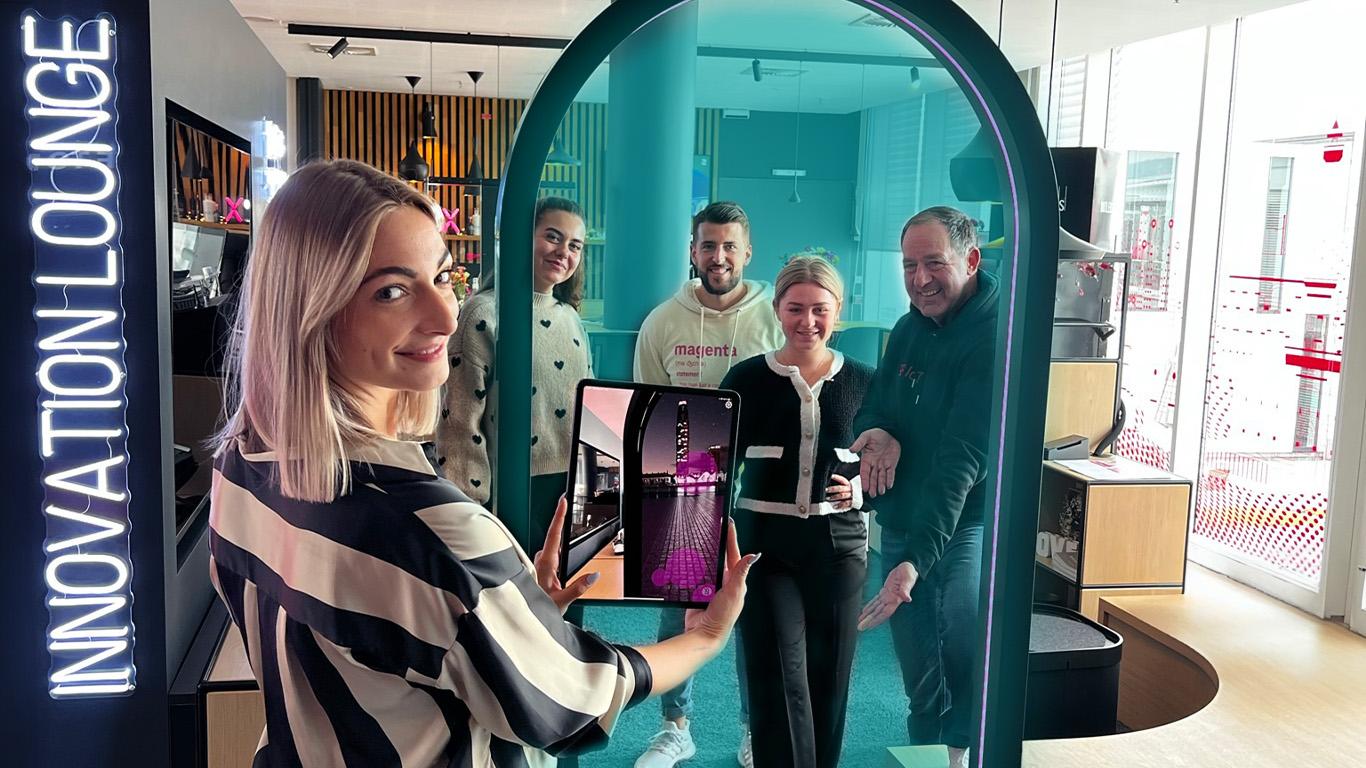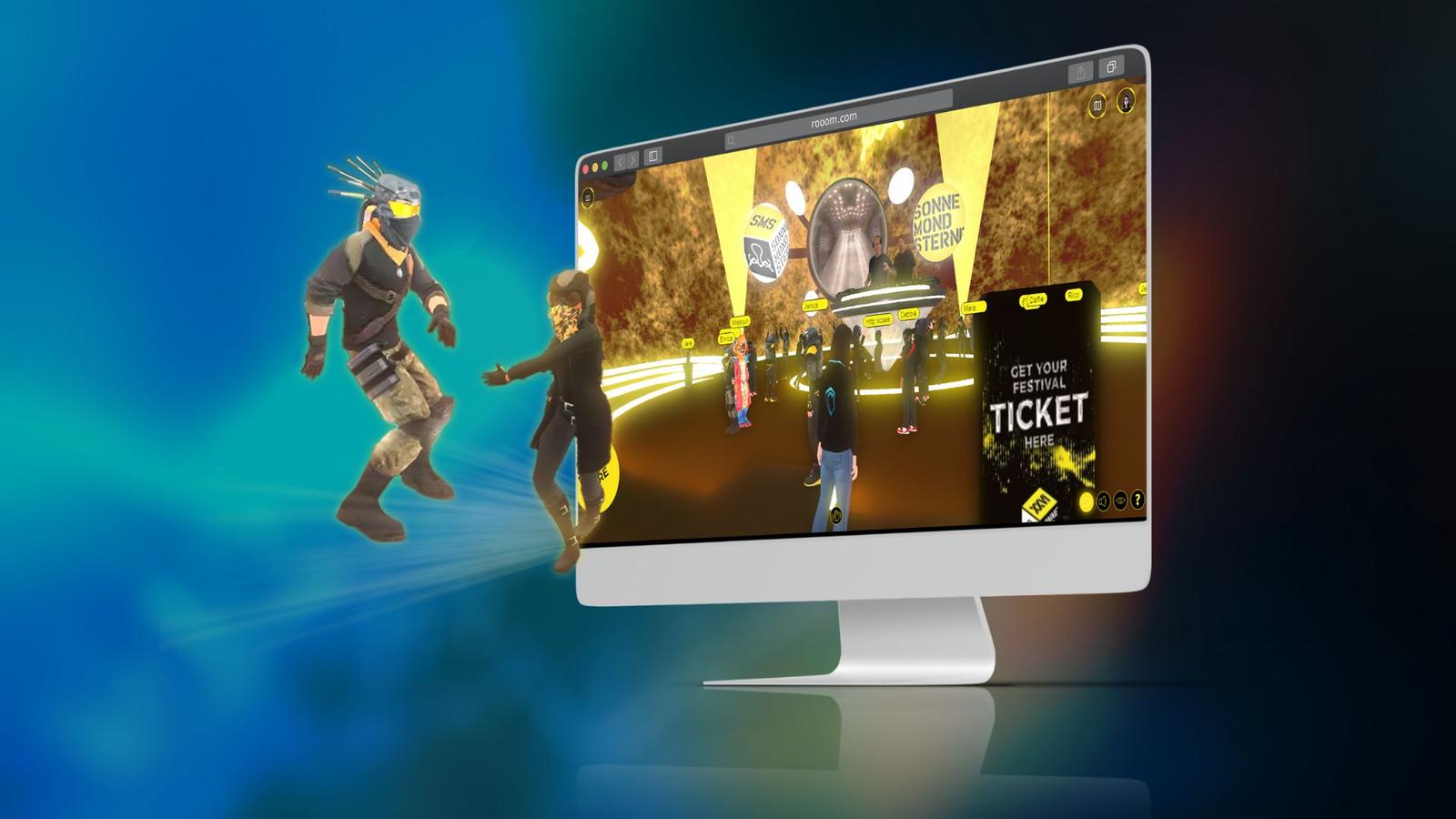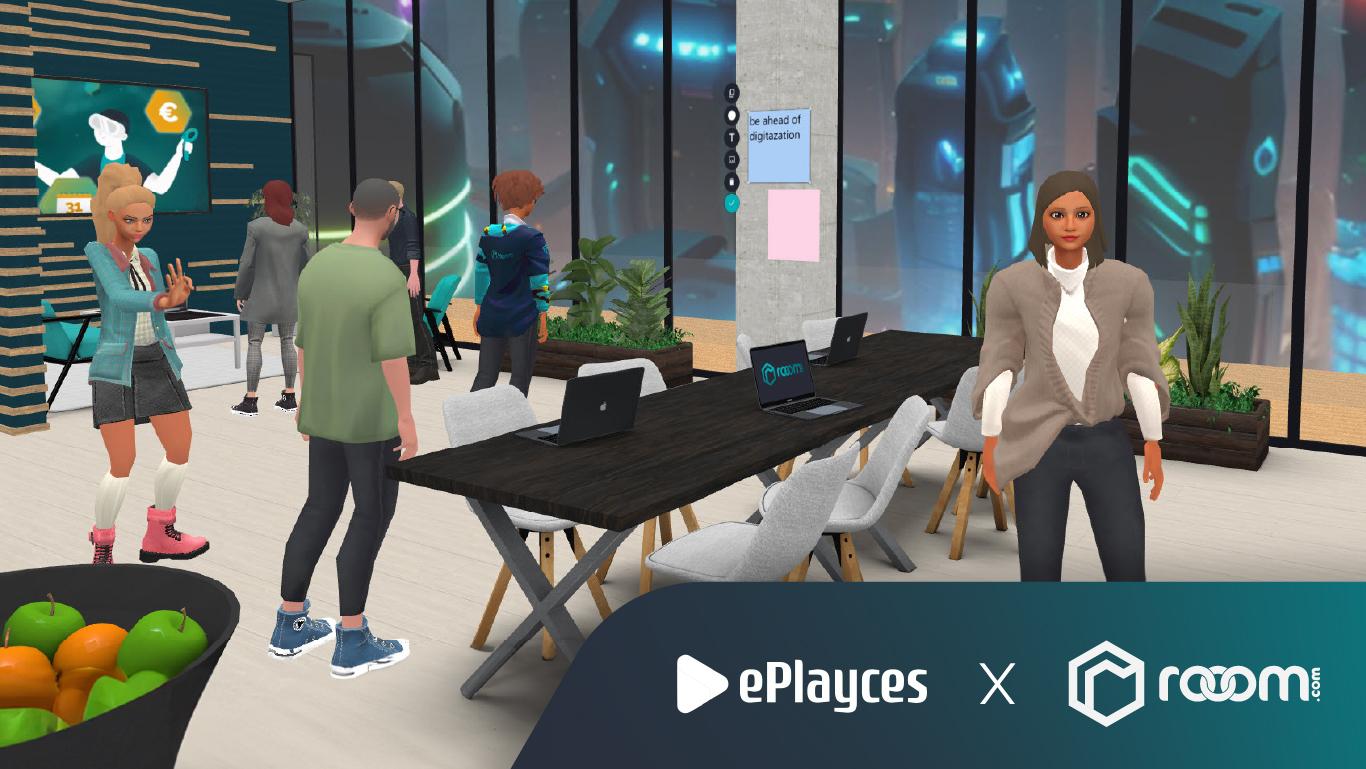Blog
Retail marketing goes immersive

- Hot Topics
- How to Metaverse
- Blog
In today’s digital world, retail is in a constant state of flux. The introduction of immersive Metaverse technologies has the potential to completely transform shopping experiences. Imagine a future where shopping is not just a simple transactional process but becomes an engaging and interactive experience. In this article, we will explore the exciting world of Metaverse solutions and how they will revolutionize retail marketing and usher in a new era of shopping.
What is the future of retail marketing and why?
In addition to digitization, various factors mean that we are facing a new era in retail marketing. Sustainability will play a central role in this, as more and more consumers want to make environmentally conscious choices. Companies will adapt their marketing strategies to emphasize sustainable practices and highlight products with environmentally friendly features. Personalization will also become more important to help consumers navigate the flood of choices. By leveraging digital solutions and advanced data analytics technologies, companies can understand customer behavior and deliver personalized content, recommendations and offers.
The technological tools that will come into play are primarily Metaverse solutions such as 3D views, Augmented Reality and Virtual Reality. Artificial intelligences will also play a crucial role in the background. These will automate data analysis processes and enable personalized experiences based on the aforementioned Metaverse technologies. This will create immersive and interactive shopping experiences in 3D, allowing customers to virtually view and test products. We will take a closer look at how this can look in detail below.
What will also become more and more common practice in retail marketing is the inclusion of various media as omnichannel marketing. Even more than is already common today, customers will be targeted across multiple channels to provide seamless shopping experiences. Companies will combine different channels such as online stores, mobile apps, social media, and physical stores to engage customers across different platforms and touchpoints in a cohesive manner.
Goodbye leaflets – offer marketing 2.0
The classic retail brochure has become less important for offer marketing in recent years and is likely to fade further into the background in the future. The reasons for this are once again to be found in the desire for more sustainable, personalized solutions. Increasing sensitivity to environmental issues has led to a more critical view of printed promotional materials such as brochures. The production and distribution of printed brochures also consumes large amounts of resources in the form of paper and energy. Especially for companies with a large customer base or national presence, the cost factor also plays a major role. Digital advertising formats make it possible to distribute offers more cost-effectively and efficiently. Companies can address their target groups more specifically and provide personalized offers without producing large quantities of printed material.

The Rewe supermarket chain announced in the fall of 2022 that it would stop printing and distributing brochures from July 1, 2023. By doing so, the group says it will save 73,000 tons of paper, 70,000 tons of CO2, 1.1 million tons of water and 380 million kilowatt hours of energy per year.¹ This step sends out a signal and encourages other companies to rethink their marketing strategies.
What is Voice Commerce?
Voice-controlled assistants such as Amazon Alexa and Google Assistant enable customers to search for products, retrieve information and place orders by voice command. Companies need to optimize their online presence and content accordingly in order to be visible in voice-controlled searches and take advantage of this new form of shopping.
Consumer behavior has changed dramatically with the advent of digital technologies. More and more people are using the Internet and mobile devices to search for products and offers. Online shopping and e-commerce platforms offer a convenient way to discover and buy products without having to rely on printed brochures. Targeted addresses and dynamic content put the offers that really interest customers in front of their noses, which can significantly increase the effectiveness of an advertising campaign. In digital marketing, companies can also better measure and analyze the success of their campaigns. By using tools such as web analytics, they can collect data on user clicks, conversions, and engagement, and adjust their marketing strategies accordingly. This level of analytics is not possible with printed brochures. Those who rely on digital solutions in retail marketing are already prepared should the "voice commerce" trend continue to gain ground.
What are the alternatives to printed brochures?
In trade marketing, there are already numerous alternatives to the classic brochure today. For example, online marketing strategies such as social media advertising, influencer marketing, and email marketing are used. Through advertising campaigns and personalized content, companies can effectively reach their target group and build close customer loyalty. However, new technologies offer even more opportunities. By using location data, for example, companies can provide offers based on the customer’s locations. Customers who are near a store can receive special discounts or exclusive deals. Connecting mobile devices with location-based services opens up new opportunities for hyperlocal offers.
A particularly promising approach is also the use of Metaverse solutions, 3D and VR technologies. Virtual shopping experiences are available anytime, anywhere, and customers can explore and test products in an immersive environment. Such interactive and realistic presentations combine the best of both worlds: intuitive discovery like in a real store and convenient shopping from home. This the customer’s increases willingness to buy and builds strong customer loyalty.

The digital supermarket as a marketing tool
The first thing that probably comes to mind when you hear the term digital supermarket is a website or app where customers can order groceries, household items, hygiene products, drugstore items and other everyday products online. Digital supermarkets offer customers the convenience of being able to do their shopping from the comforts of their own homes, saving them the time and hassle of physical shopping. The concept, however, offers many more positive aspects. A digital supermarket can stock a wider selection of products, for example, because the problem of limited storage space in a physical store is solved. Customers can therefore draw from the full. To ensure that this doesn't become too confusing, personalized offers again come into play. These can be tailored according to customers' shopping habits and preferences. Avatars with artificial intelligence are available for personal consultations and have already memorized what the customer has bought so far. Reviews from other customers and the classic "top sellers" or "customers also bought" functions are ideal for cross-selling in the digital supermarket. This eliminates the need for impractical cardboard displays commonly seen in the physical world.
A special case: Virtual popup store
A virtual pop-up store is a temporary retail concept that can be offered as an alternative or parallel to a physical pop-up store. In a virtual pop-up store, companies can present their products or services and offer them for sale. The temporary nature of the store ensures high demand. Digital tools are used to offer an interactive and appealing shopping experience. This can be achieved, for example, through 3D visualization, virtual tours, videos, animations, or live chats with sales consultants.
Suppliers of digital markets also benefit from ingenious analysis options, because digital supermarkets generate large amounts of data. This helps to adjust the product range, optimize pricing, or improve the layout of the store to optimize the shopping experience.
Immersion through virtual products
By integrating Metaverse technologies, retail stores can create immersive shopping experiences that go beyond traditional shopping. Customers can virtually experience products, interact with others, and receive personalized advice, both in virtual environments and in regular retail stores. There are several possibilities:
Interactive Product Presentations:
Metaverse technologies enable retail stores to create interactive product presentations. By integrating 3D models and animations, customers can view products from different angles, explore features, and even perform virtual demos or trials. This immersive experience creates a more intense engagement and enables customers to make better-informed purchasing decisions.
Augmented reality (AR) applications:
AR technology enables customers to view digital product models in 3D at their fingertips or to enhance products in the real world with virtual elements. This can happen at home or as an extension of the shopping experience in the real store.
Retail stores can develop AR content that allows customers to use their smartphones or tablets to virtually place products in their own environment and view them from different angles. For example, customers can virtually place pieces of furniture in their living rooms, try on clothes or test makeup products before buying them. QR codes for TV commercials or brochures can also be used.
What is a digital price tag?
A digital price tag can be equipped with a QR code, for example, which customers can use to call up product variants or additional information in Augmented Reality. Information on the origin and quality of the product is particularly in demand.
Virtual Reality Experiences:
By usingVirtual Reality (VR) technology,retail stores can create virtual environments where customers are able to explore and purchase products. For example, customers can use VR glasses to browse virtual stores, view products and learn details without being physically present. This opens up an immersive shopping experience for customers from any location – at home or even as a supplement in the local store.

For product presentations, rooom offers the perfect tool with rooomProducts.
360° tours and virtual showrooms as virtual store space
In addition to products, the rooom platform can also be used to easily create digital supermarkets. There are two options here:
360° tours
For a 360° tour, the real store is scanned with a special camera. This creates an exact digital copy. It can then be individually enriched with click points, additional information, links, videos, 3D views and more. Virtual staging also allows new objects and products to be placed in the tour – at any time and by the customers themselves.


Virtual showrooms
If the digital store should stand out a little more from reality, it can also be created as a virtual showroom. To do this, a room template is simply adapted according to the user’s own wishes and filled with products. This variant offers many advantages:
- Full freedom of design
- Customizable with user-friendly CMS
- Integration of payment options
- Use of avatars
- Interaction with others possible
Conclusion
The main objective of trade marketing is to understand the needs and wishes of customers and to fulfill them in the best possible way. This can lead to long-term customer relationships, which in turn can significantly support the company’s success. Metaverse technologies offer a lot of potential to elegantly intercept the increasing demand for ecological, personalized solutions. New trends such as AI consulting, voice commerce or omnichannel marketing can be covered much more easily with a digital solution. In this context, real and virtual stores do not have to be mutually exclusive but can complement and enhance each other. Platforms like rooom offer simple standardized solutions for a quick entry into the world of the Metaverse. Here, retailers can cautiously approach the matter and gradually discover and test further possibilities. It doesn't have to be a big individual solution – although this is of course also possible. The fact is: early adopters offer their customer base something new and attract attention. If you get in too late, the competition is already a big step ahead.
What is your Metaverse strategy for retail?
Together we will find the right strategy for you.














